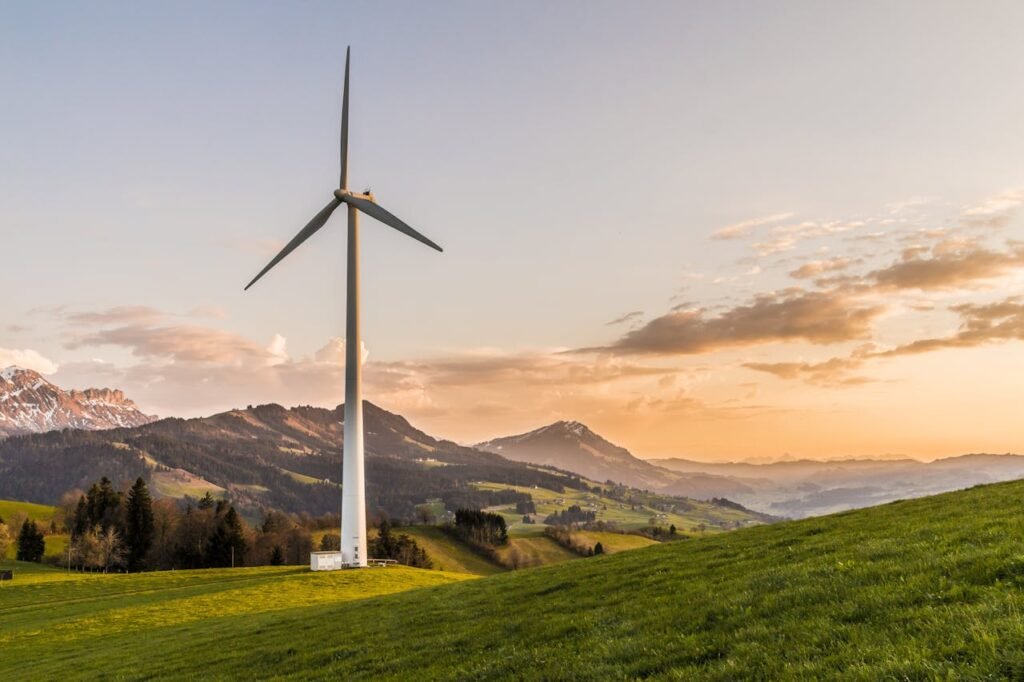Green technology is fast reshaping our world, providing new and fresh answers to most nagging environmental questions. The application of technology is furthering the goal of creating a cleaner, more resilient future through clean energy, smart cities, sustainable agriculture, and advanced recycling.
1. Introduction: The Case of Green Tech
The world is experiencing more environmental challenges, most of which are unprecedented, such as climate change and depletion of natural resources, pollution, and loss of biodiversity. Technology, which was once discussed as a cause of these issues, is now becoming an important aspect of the solution. Green technology, or, put differently, greentech or cleantech, is the innovation aimed at minimizing the negative impact on the environment as well as preserving resources and ensuring the sustainable nature of the future of all.
2. So, what is green technology?
Green technology A technology that uses science and innovation to develop products, services, and systems capable of reducing environmental impact and promoting sustainable development. It spans the domain of energy to renewable energy and energy-efficient appliances, advanced recycling, and smart agriculture. It is not only a need to minimize the destruction we continue to cause on the planet but also to restore and replenish natural systems on our planet.
3. The Four Pillars of Green Tech
Green technology is guided by four core principles:
| Pillar | Description |
|---|---|
| Energy Efficiency | Reducing energy consumption and waste through smarter design and technology. |
| Renewable Energy | Shifting from fossil fuels to clean, renewable sources like solar, wind, and hydro power. |
| Waste Reduction | Minimising waste via recycling, reuse, and circular economy models. |
| Sustainable Design | Creating products and systems that are eco-friendly, durable, and resource-efficient. |

4. Key Innovations Powering Sustainability
Renewable Energy
- Green tech revolves around solar, wind, hydro, and geothermal energy and their clean substitutes to fossil fuel.
- Innovations to solar panels, wind turbine technology and storage (batteries and hydrogen fuel cells) are causing renewables to become more cost effective and dependable on both fronts than ever before.
- Vertical wind turbines and distributed solar systems (e.g. floating solar farms) are providing access to energy in both urban and rural regions.
Energy Efficiency
- Energy-efficient household devices, smart grids, and LED lights are decreasing the amount of energy wasted and emissions.
- Architecture innovations, including high-performance insulation and green roofs, are used to reduce heating and cooling demands by enormous proportions.
- Artificial intelligence and smart meters are used to optimize energy consumption within business and residential buildings.
Sustainable Transportation
- Hydrogen-powered transport and electric vehicles (EVs) are cutting automobile, bus, and lorry emissions in half.
- Due to the advancement in charging equipment and battery technology, EVs have become affordable and convenient to use.
- Urban pollution is being further reduced by upgraded public transport systems, the construction of cycle segments, and alternative fuels (such as biofuels).
Waste Management & Circular Economy
- Sophisticated recycling technologies, waste treatment facilities, and anaerobic digesters transform rubbish into raw materials.
- Circular economy modeling promotes reuse and upcycling of material and minimizes the number of materials going into landfills as well as the waste of raw materials.
- Technologies to convert waste into other new products are showing the way out of the plastic waste crisis through chemical and mechanical recycling.
Smart Cities
- • The Internet of Things (IoT), AI, and big data are making cities smarter and more sustainable.
- Smart infrastructure manages energy, water, and transport more efficiently, reducing emissions and improving quality of life.
- Environmental sensors help monitor air quality and resource use, enabling data-driven urban planning.
Sustainable Agriculture
- Precision agriculture is a way of using drones, sensors, and GPS to maximize the use of water, fertilizer, and pesticides, thus not only increasing yields but also environmental efficiency.
- Hydroponics and vertical farming enable food production throughout the year on low land and water with little or no wastage of food, and in some cases, within a city.
- Data analytics and AI are another way food loss can be prevented by aligning supplies to demands more precisely.
Carbon Capture & Storage
- Carbon capture and storage (CCS) technologies remove CO₂ from industrial processes or directly from the air, storing it underground or turning it into useful products.
- New methods, such as mineralization, lock carbon away safely and permanently.
- These innovations are crucial for industries that are hard to decarbonize, like cement and steel.

5. Economic and Social Benefits
Green technology is not just good for the planet—it’s also a powerful driver of economic growth and social well-being:
- Job creation: Under green technologists, the renewable energy sector, energy efficiency, sustainable structures, renewable energy, and environmental administration will emerge to offer new employment.
- Cost savings: The energy-efficient technologies and renewables have the potential to reduce energy bills for households and businesses.
- Public health: Better health results and less healthcare expenditure due to cleaner air and water, and less pollution.
- Corporate reputation: Business organizations that use green technology would be able to promote their brand and win customers and investors conscious about the environment.
- Resilience: Resilient systems can withstand the changes brought about by climate change and resource shortage in a sustainable and long-term prosperity.
6. Challenges and Future Trends
Challenges
- High initial costs: Many green technologies require significant upfront investment, although costs are falling rapidly.
- Infrastructure needs: Upgrading grids, transport, and recycling systems takes time and coordination.
- Regulatory complexity: Policies and standards vary widely, affecting adoption rates.
- Public awareness: Education and outreach are needed to drive widespread change.
Future Trends
- Introduction of AI, IoT, and blockchain: The technologies will allow increasing transparency, efficiency, and sustainability results based on data.
- Batteries and hydrogen. The establishment of next-generation batteries and hydrogen will facilitate further renewable integration.
- Smart cities and sustainable urbanization: Cities will remain at the forefront of the use of green tech in the management of resources and control of pollution.
- Biotechnology: New biofuels, biomaterials, and restorative agriculture will present durable alternatives in production and the food framework.
- Market growth: The future of the green tech market in the globe is headed into soaring territory, as enabled by substantial policy support and consumer demand, with Europe being the most adopted market and Asia Pacific having the most promising growth rate.
7. Table: Green Tech Innovations & Impact
| Innovation | Description & Impact |
|---|---|
| Solar & Wind Power | Clean, renewable energy; reduces reliance on fossil fuels and cuts emissions |
| Energy-Efficient Buildings | Smart design, insulation, and appliances lower energy use and costs |
| Electric Vehicles | Zero tailpipe emissions; cleaner urban air and lower carbon footprint |
| Smart Grids | Real-time energy management; integrates renewables and improves reliability |
| Advanced Recycling | Converts waste into resources; supports circular economy and reduces landfill |
| Precision Agriculture | Optimises resource use; boosts yields and reduces environmental impact |
| Carbon Capture & Storage | Removes CO₂ from atmosphere or industry; essential for hard-to-decarbonise sectors |
| Blockchain for Green Tech | Tracks emissions, energy use, and supply chains; increases transparency and accountability |
8. Frequently Asked Questions (FAQ)
What is green tech?
Green tech, or green technology, refers to the use of science and innovation to minimize environmental harm and promote sustainability. It includes renewable energy, energy efficiency, sustainable transport, waste reduction, and more.
How does green technology help the environment?
Green technology reduces greenhouse gas emissions, conserves resources, lowers pollution, and supports the regeneration of natural systems. It also helps adapt to climate change and build resilience.
What are some examples of green technology?
Examples include solar panels, wind turbines, electric vehicles, smart grids, vertical farming, advanced recycling, and carbon capture systems.
Is green tech economically viable?
Yes. While some technologies have higher upfront costs, they often lead to significant savings over time. The sector is also a major source of new jobs and economic growth.
What are the main challenges for green tech adoption?
Key challenges include high initial investment, infrastructure upgrades, regulatory hurdles, and the need for greater public awareness and education.
What is the future of green tech?
The future is bright, with rapid advances in AI, IoT, blockchain, and biotechnologies. The global green tech market is expected to grow exponentially, driven by policy, innovation, and consumer demand.
Green technology is no longer a distant vision—it is a practical, essential force shaping the world’s response to environmental and economic challenges. By embracing innovation, investing in sustainable solutions, and supporting green policies, we can all play a part in powering a sustainable future.
